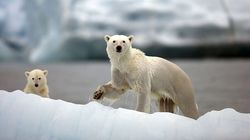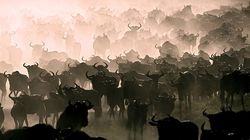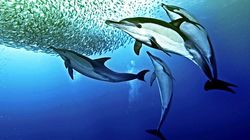The Great Melt
Episode: 1x01 | Airdate: Feb 11, 2009
The summer melt of Arctic ice, opening up nearly three million square miles of ocean and land, provides opportunities for millions of animals, including beluga whales, families of Arctic foxes, vast colonies ofseabirds and the fabled Arctic unicorn, the narwhal.
For polar bears, however, it is the toughest time of year. Why? How will they survive?
A mother polar bear and her cub make their first journey together onto the sea ice. They are looking for ringed seals, their favourite prey. It is a serious business, but the cub just wants to play. The melting ice makes it harder for them to hunt and threatens their survival.
In a unique aerial sequence, the migration of narwhal with their distinctive unicorn-like tusks is filmed for the first time. The whales' journey is risky as they travel along giant cracks in the ice. If the ice were to close above them, they would drown.
Hundreds of beluga whales gather in the river shallows. They rub themselves on smooth pebbles in one of the most bizarre summer spectacles.
Guillemot chicks take their first flights from precipitous sea cliff nests to the sea 300 metres below. They attempt to glide to safety, but many miss their target. Their loss is a bonus for the hungry Arctic fox family waiting below.
As the melt comes to an end, the bears gather, waiting for the sea to freeze again. Two 400kg males square up to each other to spar.
In the final ten-minute diary, Quest for Ice Whales, the crew show how they managed to capture footage of the elusive narwhal on their annual journey through the ice.








